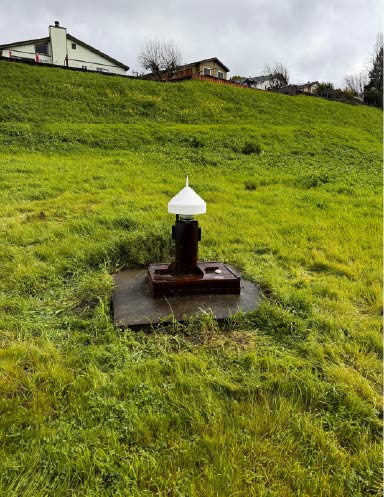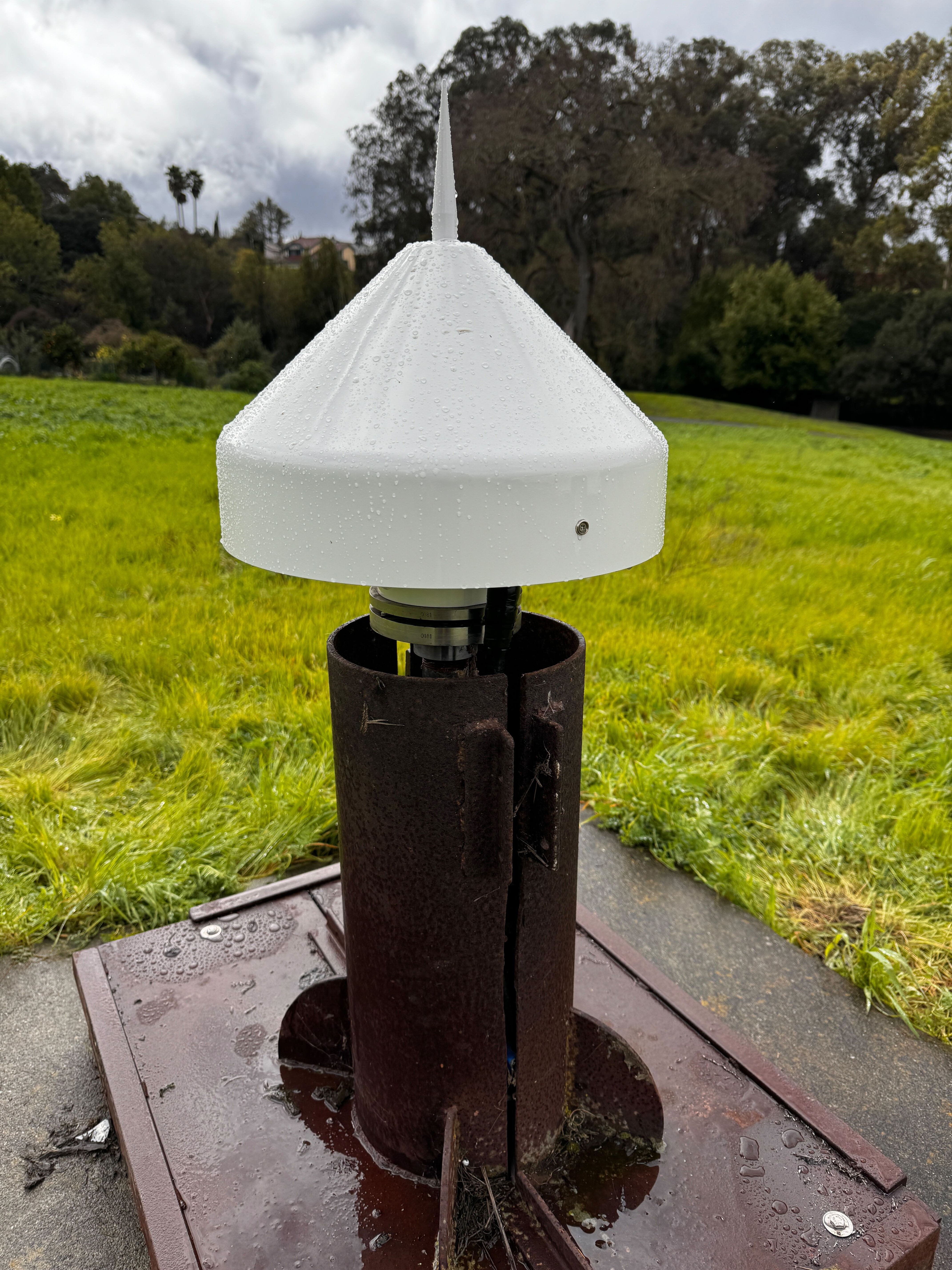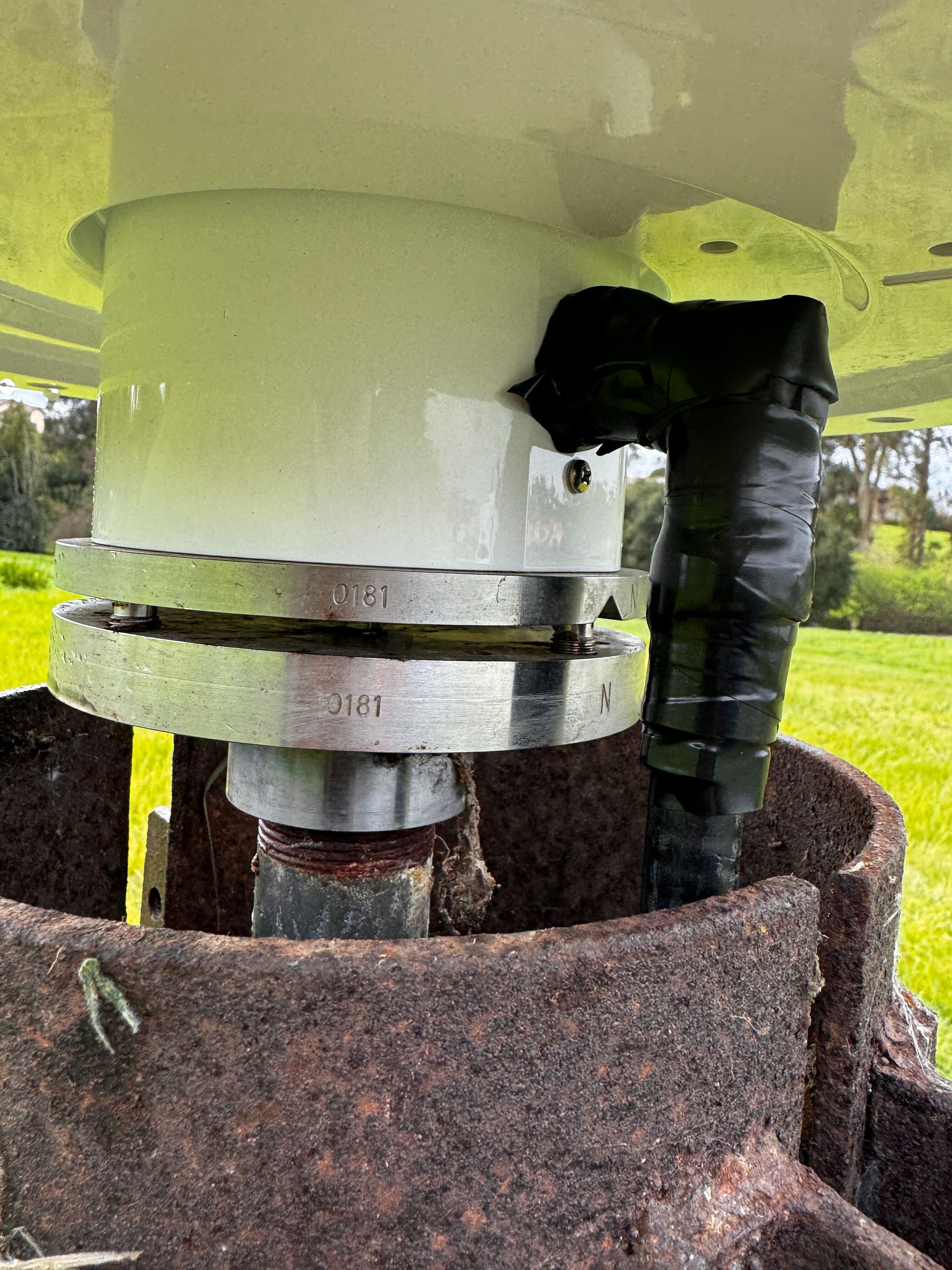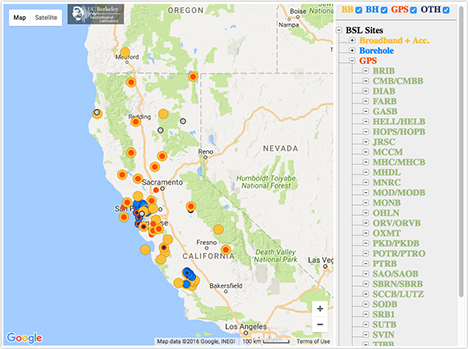OHLN - Ohlone Park
We operate broadband and geophone stations under the network code BK. The Berkeley Digital Seismic Network (BDSN) is a regional network of very broadband and strong motion seismic stations designed to monitor regional seismic activity as well as provide high quality data. The Berkeley borehole stations have borehole geophones or other seismic sensors and may have other geophysical instrumentation.
BARD is our GPS network for monitoring crustal deformation across the Pacific-North America plate boundary and in the San Francisco Bay Area for earthquake hazard reduction studies and rapid earthquake emergency response assessment
| Station Name | OHLN (OHLN) |
| In Operation | 2001/10/05 00:00:00 - Present |
| Latitude | 38.01 |
| Longitude: | -122.27 |
| Elevation: | -0.5492 meters |
| Instrumentation | Borehole GPS Other |
Location
OHLN is one of five sites installed as a pilot test for the Plate Boundary Observatory, known informally as the Mini-PBO project. This site is known as SFOHL in the USGS Low Frequency Network and is located in Ohlone Park, in Hercules, CA.Network
Mini Plate Boundary Observatory Network (BK)Bay Area Regional Deformation Network (BARD)
USGS Low Frequency Network (UL)
Geology
Sandstone, shale, siltstone, conglomerate, and breccia
Borehole Conditions
The OHLN borehole was the first of the MiniPBO sites to be drilled and was installed on 7/16/2001. The strainmeter is emplaced at a depth of 670.5 ft and the seismometer is at a depth of 645.5 ft. This figure shows the location of equipment in the borehole.GPS Monument Description
1.25" pipe bolted into borehole casingTable of Seismic Instrumentation
| Sensor | Datalogger | SEED Channels | Location | |
| Geophone | Mark Products L-22 Horizontal Geophone | Q330-GFE | EP?,LP?,SP? | 40 |
| Mark Products L-22 Vertical Geophone | Q330-GFE | EP?,LP?,SP? | 40 | |
| Sensor | Datalogger | SEED Channels | Location | |
| Auxiliary | AntennaCurrent | Q330-GFE | VE? | 40 |
| ClockPhase | Q330-GFE | LC?,VC? | 40 | |
| ClockQuality | Q330-GFE | LC?,VC? | 40 | |
| InputVoltage | Q330-GFE | VE? | 40 | |
| Paroscientific 8WD Digital Pressure Meter | Q330-GFE | LD? | 40 | |
| Sacks 3-component Tensor Strainmeter | Q330-GFE | BS?,HS?,LS? | 40 | |
| SystemCurrent | Q330-GFE | VE? | 40 | |
| SystemTemperature | Q330-GFE | VK? | 40 | |
| VCOValue | Q330-GFE | VC? | 40 | |
| CalibrationInput | QEP | LC? | EP | |
| Humidity | QEP | LI? | EP | |
| Pinnacle5000 | QEP | BA?,LA? | EP | |
| Pressure | QEP | LD? | EP | |
| Setra Systems Model 270 Barometer | QEP | LD? | EP | |
| Temperature | QEP | LK? | EP |
GPS Instrumentation
| Receiver | Antenna | Radome | - | |
| GPS | SEPTENTRIO POLARX5 | SEPTENTRIO SEPCHOKE_B3E6 | SPKE | - |
Waveforms and associated metadata, and GPS data, are available at the Northern California Earthquake Data Center (NCEDC).
Waveform Data
- BK Information Directory, including
- List of station locations
- List of available channels
- Instrument Response
- Querying the archives
- Download waveform data
GPS Data
- Site log: ohln.log
Data Type From To Low-rate raw 11/21/2001 10/6/2003 Low-rate rinex 11/21/2001 present High-rate raw 10/6/2003 present High-rate rinex 5/1/2010 present
Noise Analysis
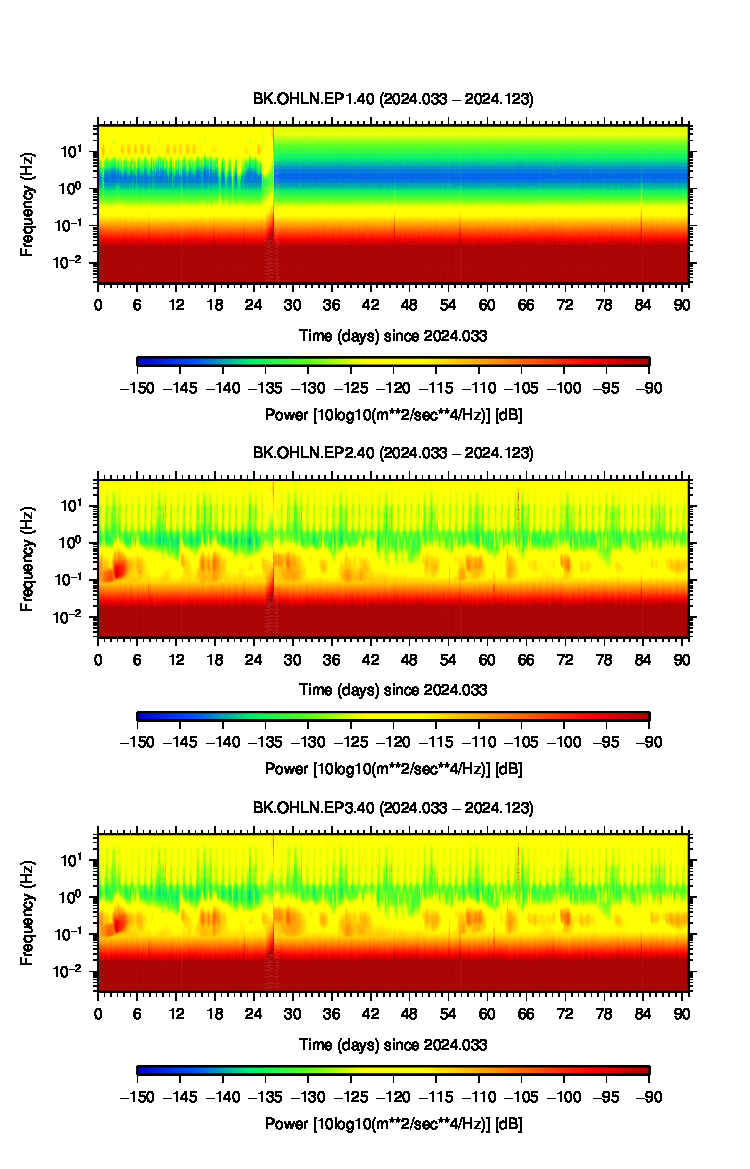 |
GPS Data Quality
Completeness
Data completeness is defined both as "Completeness of observations" and "Cycle slips per observation". "Completeness of Obs." is the number of epochs in the final RINEX file normalized to the expected number. This percentage will go down if time is missing from the RINEX file. "Cycle slips per Obs." is the total number of detected cycle slip normalized to the total number of observations in the RINEX file. This number will increase as the receiver loses lock on satellites more frequently.
| Previous Year |
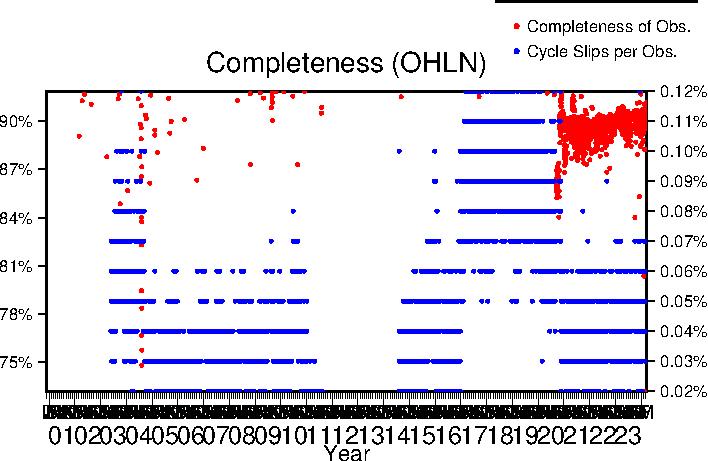 |
| Lifetime |
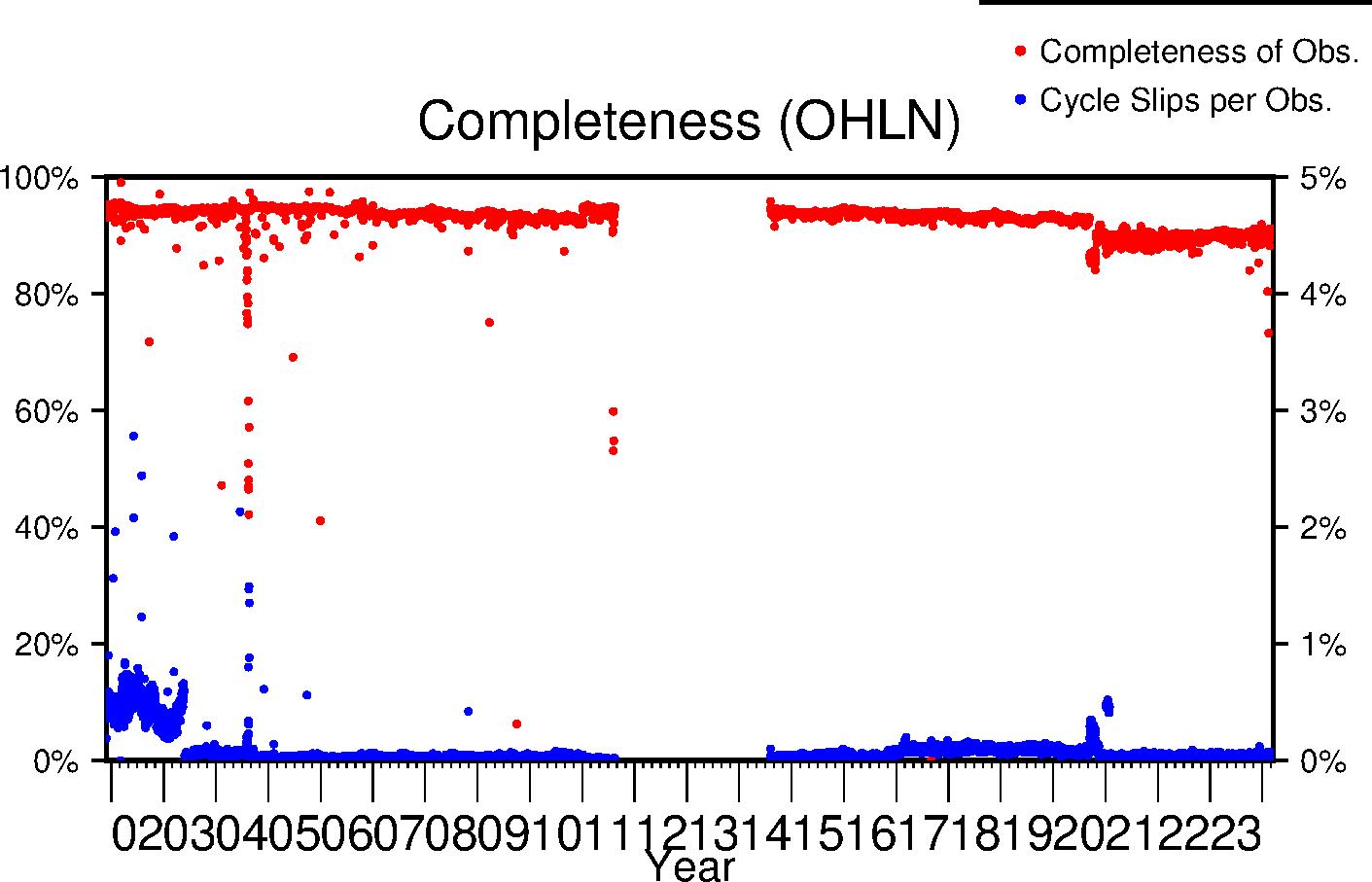 |
Multipath
The effects of multipath on the data are estimated by parameters for L1 and L2 (MP1 and MP2 respectively); see Estey and Meertens (GPS Solutions, 1999) for derivation. The daily value is the RMS of MP1 and MP2 throughout the day and for all satellites. Higher values indicate a greater prevalence and/or strength of multipathing, i.e. objects on the ground are providing multiple reflection pathways from the satellite to antenna.
| Previous Year |
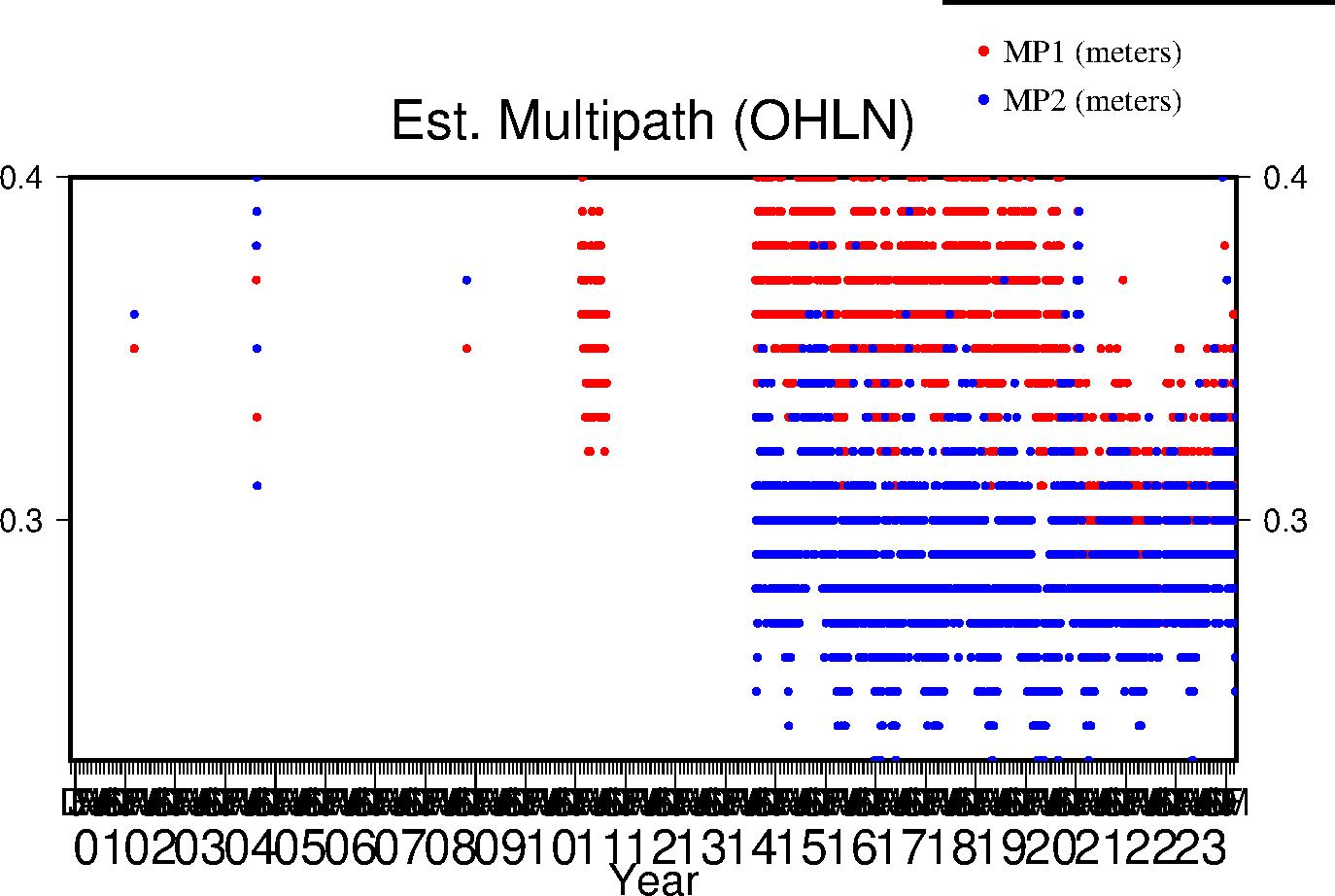 |
| Lifetime |
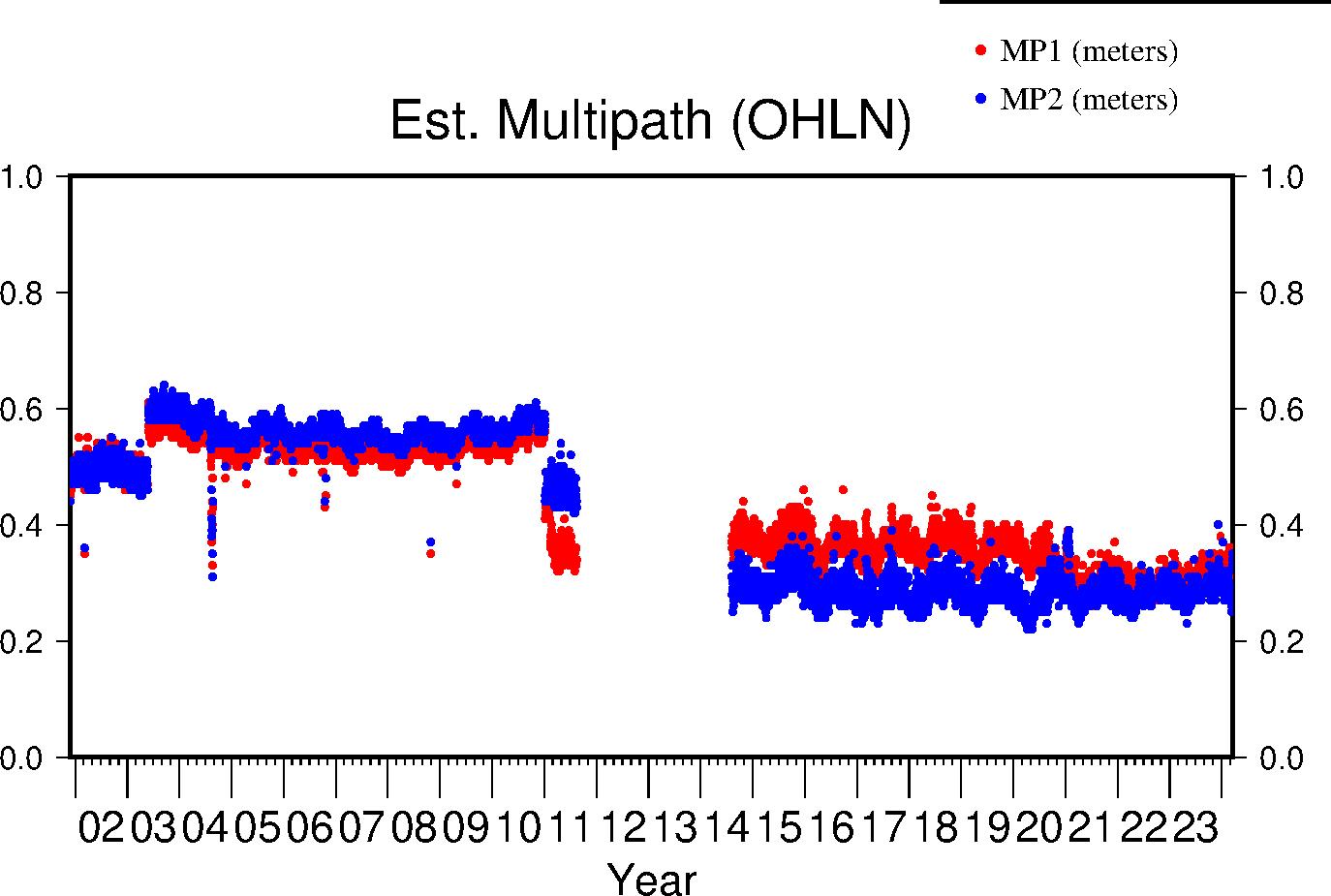 |
Signal-to-Noise Ratio
The Signal-to-Noise ratios are the mean values above the QC elevation mask for L1 and L2 respectively.
| Previous Year |
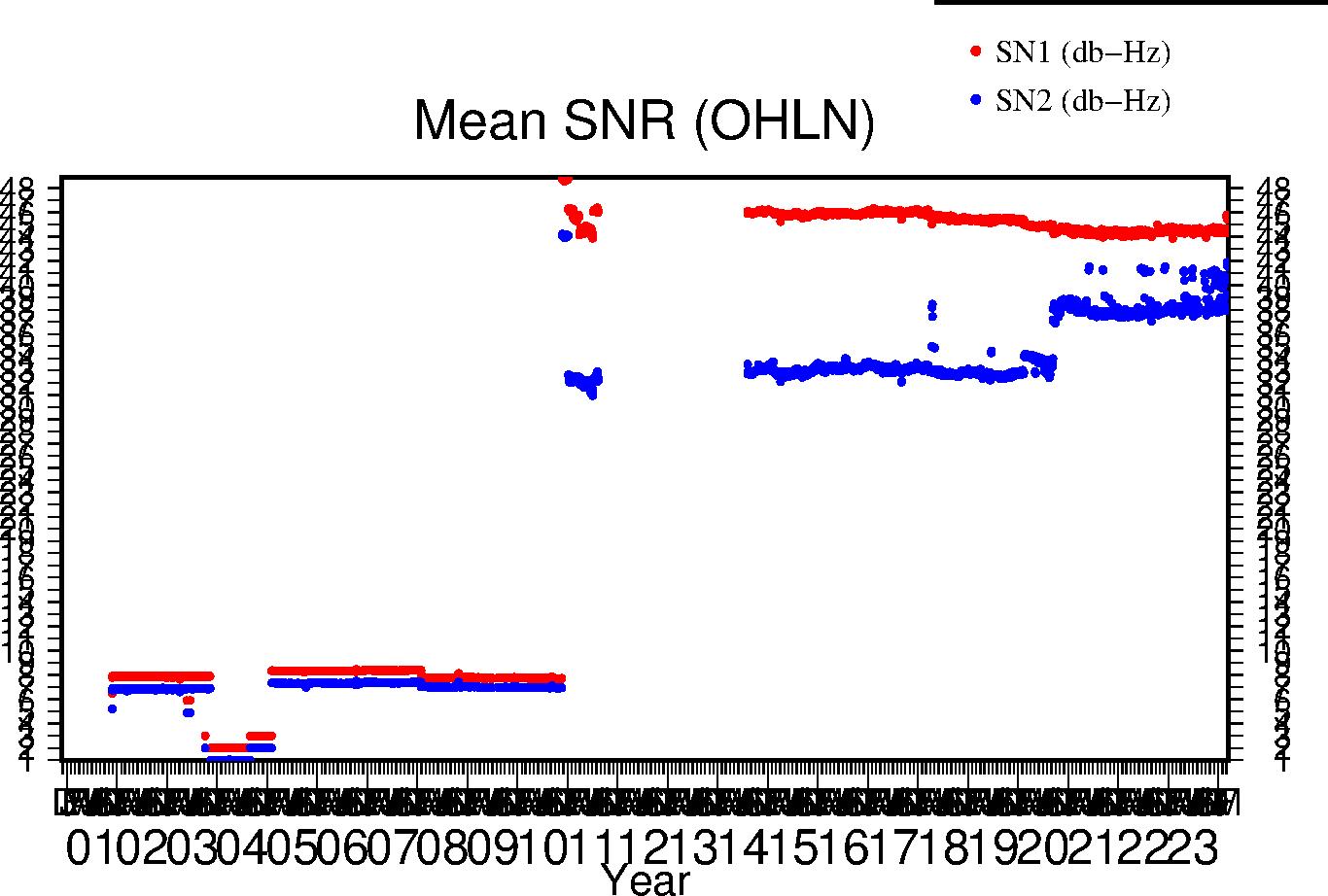 |
| Lifetime |
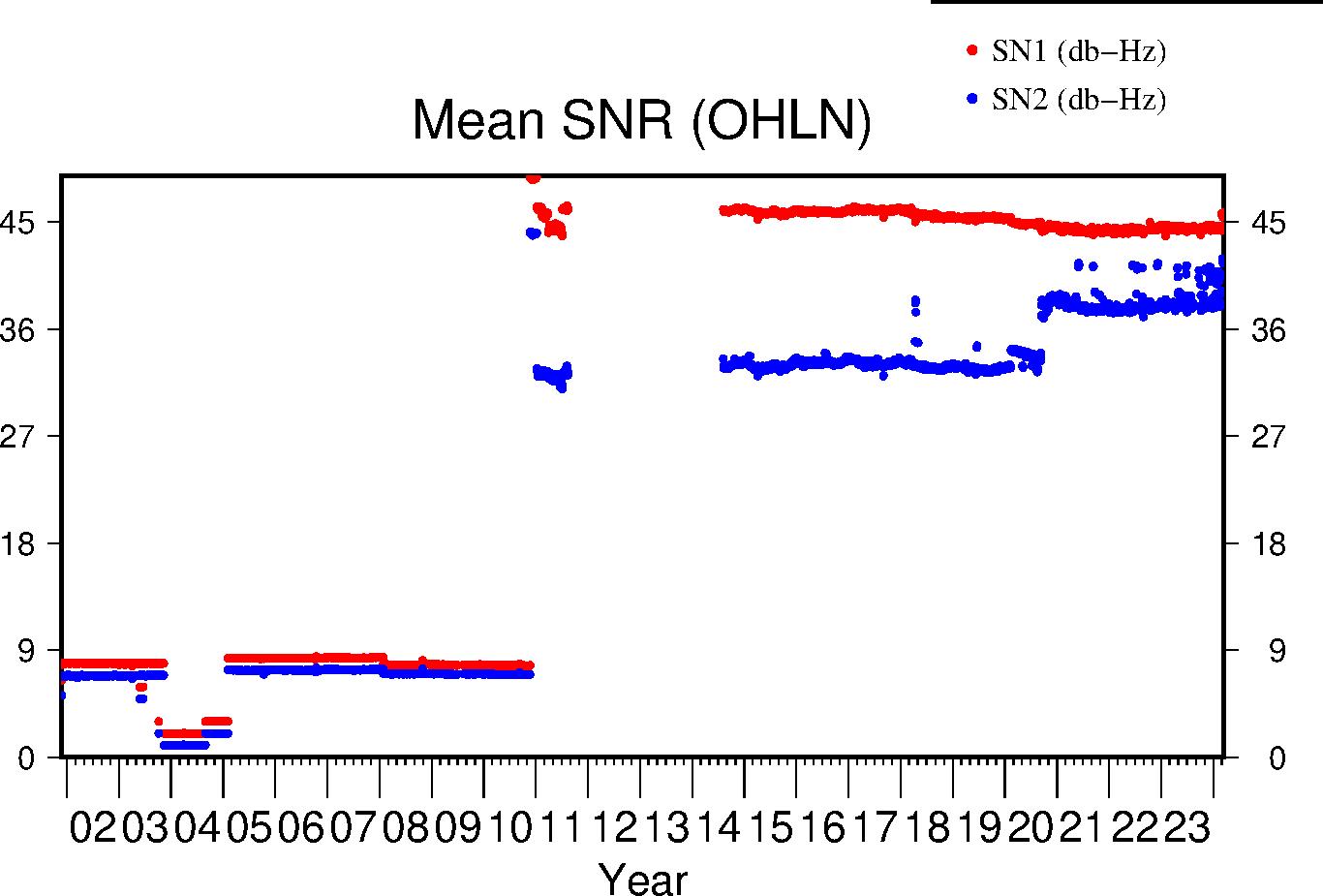 |

